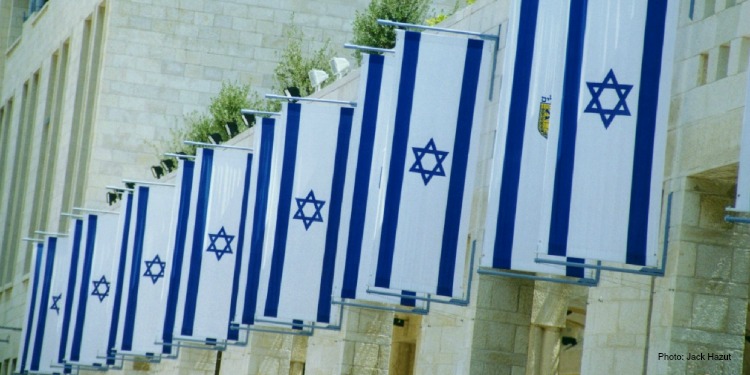Our Unique Contributions
Yael Eckstein | May 30, 2022

“The Israelites are to camp around the tent of meeting some distance from it, each of them under their standard and holding the banners of their family.” —Numbers 2:2
Each week in synagogue, Jews read through the Torah from Genesis to Deuteronomy. The Torah portion for this week is Bamidbar, which means “in the desert,” from Numbers 1:1–4:20.
Just a few weeks ago, Israel celebrated Yom HaAtzmaut, our 74th Independence Day, and Israeli flags were hanging everywhere — on most homes, on highways, and in public places.
The Israeli flag we know today was designed in 1897, by the first Zionist Congress, with the intention of creating a flag that represented the Jewish people. They chose a white background, a color of newness and purity, to represent the rebirth of the nation of Israel.
The two stripes of blue — techelet, the biblical blue — the color of heaven, are a reference to the Jewish prayer shawl and represent Jewish tradition and connection to God. And the Star of David recalls King David, who established Jerusalem as the eternal capital of the Jewish people.
When I watched my kids proudly waving their Israeli flags on Independence Day, my heart swelled with pride. I love that they identify with the flag that represents the Jewish people and everything we stand for.
Our Unique Contributions
In this week’s Torah portion, we read about the first time that flags were used by the nation of Israel. We read, “The Israelites are to camp around the tent of meeting some distance from it, each of them under their standard and holding the banners of their family.”
As this verse describes, each of the 12 tribes of Israel had their own flag. But why not have one flag for the entire nation like we do today? Why were there 12 different tribes at all?
According to Jewish tradition going back thousands of years, each of the flags was decorated with images that represented the unique traits and spiritual gifts of that tribe. Rather than dividing the nation, these different flags represented what each of the tribes contributed to the nation as a whole. And they all were camped around the Tabernacle, “the tent of meeting.”
In other words, each tribe used its uniqueness for the same single purpose, the glory and service of God.
God neither expects nor wants us all to be the same. He made us each with our own talents, strengths, and weaknesses so that we can make our own unique contributions to His kingdom. And we are to wave our banner proudly!
Your Turn:
Think about your own uniqueness. Think of ways that you can bring honor and glory to God in your own special way.
